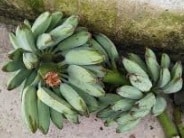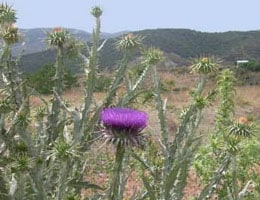 The fleshy leaf or stem of various plants is called stalk . The meaning may vary according to the region, acquiring particular nuances in each case.
The fleshy leaf or stem of various plants is called stalk . The meaning may vary according to the region, acquiring particular nuances in each case.
Chard , for example, has stalks. This is what their petioles are called; that is, to the nipples or small branches that support the leaves of this vegetable .
Although the most popular edible part of chard is its leaves, the stalks also serve as food . In fact, it is possible to make a large number of recipes with this ingredient.
The breaded chard stalks are prepared with flour and egg . First you have to boil the stalks so that they are tender, then dredge them in wheat flour and finally in beaten egg. Once submerged in the egg, they must be fried in very hot oil. Another possibility is to coat the stalks with breadcrumbs and bake them.
It is also possible to cut the chard stalks into small pieces and sauté them in oil with garlic, onion and peppers (bell peppers). They are also used to make cakes, omelettes and even lasagna and can be pickled.
In the case of the nopal or prickly pear , the penca is the leaf. This species is part of the cactus group and grows as a shrub.
The prickly pear leaves have calcium, potassium and different types of proteins and vitamins . Traditional medicine uses them since they provide various benefits to the body.
Salads, jams and juices are prepared with prickly pear leaves. This product is also used as a cosmetic because it is attributed moisturizing and revitalizing properties.
 Banana leaves , on the other hand, are the clusters of this fruit. There is also penquero thistle , a plant species known as penca and which in the scientific field is called Cynara cardunculus . The penca is found in abundance in rural areas of Chile and is strongly related to the artichoke , one of the best-known species worldwide.
Banana leaves , on the other hand, are the clusters of this fruit. There is also penquero thistle , a plant species known as penca and which in the scientific field is called Cynara cardunculus . The penca is found in abundance in rural areas of Chile and is strongly related to the artichoke , one of the best-known species worldwide.
The penca is not only planted in Chile, since it emerged on the European continent and also in North Africa, more precisely in the Mediterranean Sea basin; There it is known as artichoke or thistle of Castile . The Romans and Greeks had a special affinity for penca thanks to its nutritional properties and the possibilities it offered them when cooking. Many centuries later, it is said that King Henry VIII of England was obsessed with this vegetable, and that he ate it all the time.
The harvest time for penca is the end of winter and the beginning of spring, and it must be done with special care to avoid being hurt by its sharp leaves. In the kitchen, it must be peeled and de-pinned before use, and then it can be cooked or served raw, cut into different shapes and sizes, accompanied by oil or lemon, etc. One detail to keep in mind is that the penca has a naturally quite salty flavor, which is why it is not recommended to add salt before trying it.
The penca flower is large and purple. It is wrapped in thorns and blooms during the summer. In Spain, for example, it is used to cut milk in the production of various cheeses. It can also be used to prepare some bitter drinks.
Among the nutritional properties of the leaf we can highlight its high potassium and water content. In addition, it is low in proteins, carbohydrates and fats, something that makes it ideal for weight loss diets. It also contains magnesium, phosphorus, vitamins A and B9, calcium and iron.
